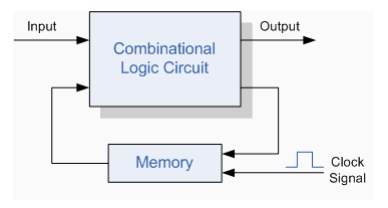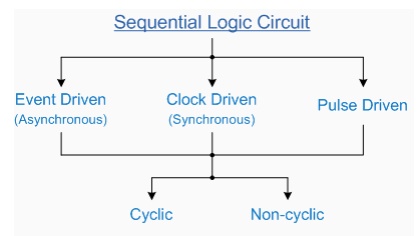Chapter: Basic Electrical and Electronics Engineering : Digital Electronics
Sequential Logic Circuit
Sequential Logic Basics
Unlike
Combinational Logic circuits that change state depending upon the actual
signals being applied to their inputs at that time, Sequential Logic circuits
have some form of inherent "Memory" built in to them and they are
able to take into account their previous input state as well as those actually
present, a sort of "before" and "after" is involved. They
are generally termed as Two State or Bistable devices which can have their
output set in either of two basic states, a logic level "1" or a
logic level "0" and will remain "latched" indefinitely in
this current state or condition until some other input trigger pulse or signal
is applied which will cause it to change its state once again.
Sequential Logic Circuit

The word
"Sequential" means that things happen in a "sequence", one
after another and in Sequential Logic circuits, the actual clock signal
determines when things will happen next. Simple sequential logic circuits can
be constructed from standard Bistable circuits such as Flip-flops, Latches or
Counters and which themselves can be made by simply connecting together NAND
Gates and/or NOR Gates in a particular combinational way to produce the
required sequential circuit.
Sequential
Logic circuits can be divided into 3 main categories:
1. Clock
Driven - Synchronous Circuits that are Synchronised to a specific clock signal.
2. Event
Driven - Asynchronous Circuits that react or change state when an external
event occurs.
3. Pulse
Driven - Which is a Combination of Synchronous and Asynchronous.
Classification of Sequential
Logic

As well
as the two logic states mentioned above logic level "1" and logic
level "0", a third element is introduced that separates Sequential Logic circuits from their Combinational Logic counterparts,
namely TIME. Sequential logic
circuits that return back to their original state once reset, i.e. circuits
with loops or feedback paths are said to be "Cyclic" in nature.
Related Topics